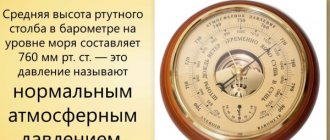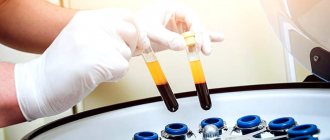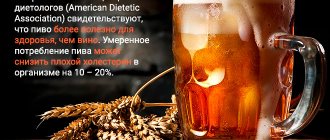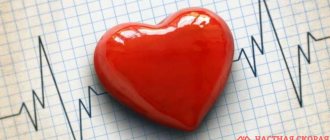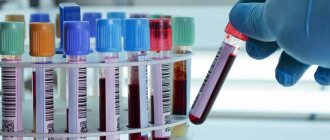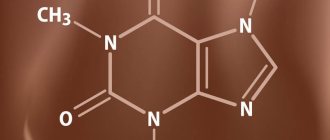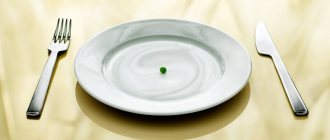Almost all of the images presented here were taken using a scanning electron microscope (SEM). The electron beam emitted by such a device interacts with the atoms of the desired object, resulting in 3D images of the highest resolution. Magnification of 250,000 times allows you to see details measuring 1-5 nanometers (that is, billionths of a meter).
The first SEM image was obtained in 1935 by Max Knoll, and already in 1965 the Cambridge Instrument Company offered its Stereoscan. Now such devices are widely used in research centers.
Looking at the pictures below, you will take a journey through your body, starting from your head and ending with your intestines and pelvic organs. You'll see what normal cells look like and what happens to them when they are attacked by cancer, and you'll also get a visual understanding of how, say, the first meeting of an egg and sperm occurs.
Red blood cells
This is what you might call the heart of your blood, the red blood cells (RBCs). These cute biconcave cells have the responsible task of carrying oxygen throughout the body. Typically, in one cubic millimeter of blood there are 4-5 million such cells in women and 5-6 million in men. People living at high altitudes, where there is a lack of oxygen, have even more red cells.
Main components of a prokaryotic cell
The main components of a prokaryotic cell are:
- Cell wall , which surrounds the cell from the outside, protects it, gives it a stable shape, preventing it from osmotic destruction. In bacteria, the cell wall consists of murein, built from long polysaccharide chains connected by short peptide bridges. The archaeal cell wall does not contain murein, but is built mainly from a variety of proteins and polysaccharides.
- Flagella are the organelles of movement of some bacteria. The bacterial flagellum is built much simpler than the eukaryotic one, and it is 10 times thinner, externally not covered with a plasma membrane and consists of identical protein molecules that form a cylinder. The flagellum is secured in the membrane by the basal body.
- Plasma and internal membranes . The general principle of the structure of cell membranes does not differ from eukaryotes, however, there are many differences in the chemical composition of the membrane; in particular, the membranes of prokaryotes do not contain molecules of cholesterol and some lipids inherent in eukaryotic membranes. Most prokaryotic cells (unlike eukaryotic cells) do not have internal membranes that divide the cytoplasm into sections (compartments). Only in some photosynthetic and aerobic bacteria the plasmalemma forms a fold into the cell, which performs the corresponding metabolic functions.
- A nucleoid is a section of the cytoplasm not limited by membranes in which a circular DNA molecule is located - the “bacterial chromosome”, where all the genetic material of the cell is stored.
- Plasmids are small additional circular DNA molecules that usually carry only a few genes. Plasmids, unlike the bacterial chromosome, are not an essential component of the cell. Usually they give the bacteria certain properties that are beneficial to it, such as resistance to antibiotics, the ability to absorb certain energy substrates from the environment, the ability to initiate the sexual process, etc.
- Ribosomes in prokaryotes , like in all other living organisms, are responsible for the translation process (one of the stages of protein biosynthesis). However, bacterial ribosomes are somewhat smaller than eukaryotic ones and have a different composition of proteins and RNA. Because of this, bacteria, unlike eukaryotes, are sensitive to antibiotics such as erythromycin and tetracycline, which selectively act on prokaryotic ribosomes.
- Spores (endospores) are structures surrounded by a dense shell that contain bacterial DNA and ensure survival in unfavorable conditions. Only some types of prokaryotes are capable of forming spores, for example, in particular the causative agent of tetanus, the causative agent of botulism and the causative agent of anthrax. To form an endospore, the cell replicates its DNA and surrounds the copy with a dense shell, excess water is removed from the created structure, and its metabolism slows down. Bacterial spores can withstand fairly harsh environmental conditions, such as prolonged drying, boiling, and short-wave irradiation.
Purkinje cells
Of the 100 billion neurons in your brain, Purkinje cells are some of the largest. Among other things, they are responsible in the cerebellar cortex for motor coordination. They are adversely affected by alcohol or lithium poisoning, as well as autoimmune diseases, genetic disorders (including autism), as well as neurodegenerative diseases (Alzheimer's, Parkinson's, multiple sclerosis, etc.).
What does an animal cell look like under a microscope?
Under a standard optical microscope, the main components are visible. Due to the fact that they are connected into a constantly changing organism that is in motion, it can be difficult to identify individual organelles.
The following parts are not in doubt:
- core,
- cytoplasm,
- cell membrane.
A higher resolution microscope, a carefully prepared specimen, and some practice will help you study the cell in more detail.
Villi of the small intestine
The villi of the small intestine increase its area, which promotes better absorption of food. These are irregularly cylindrical outgrowths up to 1.2 millimeters high. The basis of the villi is loose connective tissue. In the center, like a rod, runs a wide lymphatic capillary, or lacteal sinus, and on the sides of it there are blood vessels and capillaries. Fats pass through the milky sinus into the lymph and then into the blood, and proteins and carbohydrates enter the bloodstream through the blood capillaries of the villi. Upon careful examination, you can notice food debris in the grooves.
Types of human tissues and their functions
Tissues are an association of groups of cells according to their purpose (function). Organs are formed from tissues. Some organs are made up of the same type of cells (for example, heart muscle and skeletal muscle). Some cells have a high degree of proliferation (that is, multiplication by division), under the influence of hormones, for example.
Others, when mature, lose the ability to divide or mutate - nerve cells, blood cells.
Types of organic fabric:
- Epithelium - performs the integumentary function; the outer covering is formed from it - skin, mucous membranes, soft tissues. Forms the outer capsule of some organs.
- Connective – cartilaginous, fatty, bone.
- Muscular – it forms all types of muscles, performs a motor and contractile function.
- Nervous – consists of nerve cells (neurons). Provides communication between organs and tissues and the brain through electrical impulses.
Human embryo and sperm
It looks like a war of the worlds, but in fact, you have an egg in front of you 5 days after fertilization. Some sperm are still retained on its surface. The image was taken using a confocal microscope. The egg and sperm nuclei are purple, while the sperm flagella are green. The blue areas are nexuses, intercellular gap junctions that communicate between cells.
Distinctive features of plant and animal cells in the table
Plant and animal cells have both similarities and differences, which are briefly described in the table:
| Sign | Vegetable | Animal |
| Getting food | Autotrophic. Photosynthesizes nutrients | Heterotrophic. Does not produce organic matter. |
| Power storage | In vacuole | In the cytoplasm |
| Storage carbohydrate | starch | glycogen |
| Reproductive system | Formation of a septum in the maternal unit | Formation of constriction in the maternal unit |
| Cell center and centrioles | In lower plants | All types |
| Cell wall | Dense, retains its shape | Flexible, allows change |
The main components are similar for both plant and animal particles.
Endoplasmic reticulum
In a eukaryotic cell, there is a system of membrane compartments (tubes and cisterns) passing into each other, which is called the endoplasmic reticulum (or endoplasmic reticulum, ER or EPS). That part of the ER, to the membranes of which ribosomes are attached, is referred to as the rough (granular, rough) endoplasmic reticulum; protein synthesis occurs on its membranes. Those compartments that do not have ribosomes on their walls are classified as smooth ER, which takes part in lipid synthesis. The internal spaces of the smooth and granular ER are not isolated, but pass into each other and communicate with the lumen of the nuclear envelope.
Figure 4. Endoplasmic reticulum
Granular EPR
- Located in flat bags
- Ribosomes on the surface give it a rough appearance
- Some polypeptide chains are included in the rough ER and are modified
- Cells that specialize in secreting proteins have many rough ERs
Smooth EPR
- Series of interconnected tubes
- There are no ribosomes on the surface
- Lipids are collected inside the tubules
- Smooth ER of the liver inactivates waste, drugs
- The sarcoplasmic reticulum of muscle is a specialized form that stores calcium
EPR functions
Smooth EPR
- Synthesizes lipids
- Metabolizes carbohydrates
- Detoxifies drugs and poisons
- Accumulates calcium ions
Granular EPR
- Has associated ribosomes
- Distributes transport vesicles, proteins surrounded by membranes
- Is a membrane plant for the cell
- Golgi apparatus
Osmotic pressure in the cell
Osmotic pressure is the excess hydrostatic pressure on a solution separated from a pure solvent by a semipermeable membrane, at which diffusion of the solvent through the membrane (osmosis) stops. This pressure tends to equalize the concentrations of both solutions due to the counter diffusion of solute and solvent molecules.
A measure of the osmotic pressure gradient, that is, the difference in water potential of two solutions separated by a semipermeable membrane, is called tonicity. A solution that has a higher osmotic pressure compared to another solution is called hypertonic, and one that has a lower one is called hypotonic.
Tissue turgor is a tense state of the membranes of living cells. Turgor pressure is the internal pressure that develops in a plant cell when water enters it as a result of osmosis and the cytoplasm is pressed against the cell wall; this pressure prevents further penetration of water into the cell.
Turgor is determined by three factors: the internal osmotic pressure of the cell, which causes tension in the cell membrane, external osmotic pressure, and the elasticity of the cell membrane.
Figure 11. Interaction of erythrocytes and plant cells with solutions.
Core
The cell nucleus contains DNA molecules on which the organism's genetic information is recorded. In the nucleus, replication occurs - the doubling of DNA molecules, as well as transcription - the synthesis of RNA molecules on a DNA matrix. In the nucleus, the synthesized RNA molecules undergo some modifications (for example, in the process of splicing, insignificant, meaningless sections are excluded from the messenger RNA molecules), after which they are released into the cytoplasm.
Ribosome assembly also occurs in the nucleus, in special formations called nucleoli. The nuclear shell is double-membrane and merges with the rough ER. In some places, the inner and outer membranes of the nuclear envelope merge and form the so-called nuclear pores, through which material exchange occurs between the nucleus and the cytoplasm.
Figure 6. Cell nucleus.
Cytoskeleton
The elements of the cytoskeleton include protein fibrillar structures located in the cytoplasm of the cell: microtubules, actin and intermediate filaments. Microtubules take part in the transport of organelles, are part of flagella, and the mitotic spindle is built from microtubules. Actin filaments are essential for maintaining cell shape and pseudopodial reactions. The role of intermediate filaments also appears to be to maintain cell structure. Cytoskeleton proteins make up several tens of percent of the cellular protein mass.
Centrioles
Centrioles are cylindrical protein structures located near the nucleus of animal cells (plants do not have centrioles, with the exception of lower algae). The centriole is a cylinder, the lateral surface of which is formed by microtubules.
Around the centrioles there is the so-called center of cytoskeletal organization, an area in which the minus ends of the cell's microtubules are grouped.
Figure 8. Centrioles.
Before division, the cell contains two centrioles located at right angles to each other. During mitosis, they move to different ends of the cell, forming the poles of the spindle. After cytokinesis, each daughter cell receives one centriole, which doubles for the next division. The duplication of centrioles does not occur by division, but by the synthesis of a new structure perpendicular to the existing one.
Vacuole
A vacuole is a single-membrane organelle found in some eukaryotic cells and performing various functions (secretion, excretion and storage of reserve substances, autophagy, autolysis, etc.). Vacuoles develop from membrane vesicles - provacuoles. Provacuoles are derivatives of the endoplasmic reticulum and the Golgi complex; they fuse to form vacuoles.
Figure 7. Vacuole.
Vacuoles and their contents are considered as a compartment separate from the cytoplasm. There are digestive and contractile (pulsating) vacuoles that regulate osmotic pressure and serve to remove waste products from the body. Vacuoles are especially noticeable in plant cells: in many mature plant cells they make up more than half the cell volume, and they can merge into one giant vacuole. One of the important functions of plant vacuoles is the accumulation of ions and the maintenance of turgor (turgor pressure). The vacuole is where water is stored.
The membrane that encloses the vacuole is called the tonoplast, and the contents of the vacuole are cell sap. Cell sap consists of water and substances dissolved in it.
Plastids
Plastids (from the ancient Greek Πλαστόс - fashioned) are semi-autonomous organelles of higher plants, algae and some photosynthetic protozoa. Plastids have from two to four membranes, their own genome and a protein synthesizing apparatus.
According to the symbiogenetic theory, plastids, like mitochondria, arose as a result of the “capture” of an ancient cyanobacterium by the predecessor of a eukaryotic “host” cell. In this case, the outer membrane of the plastids corresponds to the plasma membrane of the host cell, the intermembrane space corresponds to the external environment, the internal membrane of the plastids corresponds to the membrane of the cyanobacterium, and the stroma of the plastids corresponds to the cytoplasm of the cyanobacterium. The presence of three (euglena and dinoflagellates) or four (golden, brown, yellow-green, diatoms) membranes is considered the result of two- and three-fold endosymbiosis, respectively.
Chloroplasts (from the Greek Χλωρός - “green”) are green plastids that are found in the cells of photosynthetic eukaryotes. With their help, photosynthesis occurs. Chloroplasts contain chlorophyll.
One leaf cell can contain 15-20 or more chloroplasts, and some algae have only 1-2 giant chloroplasts (chromatophores) of various shapes.
Chloroplasts are bounded by two membranes - outer and inner. The outer membrane delimits the liquid internal homogeneous environment of the chloroplast - the stroma (matrix). The stroma contains proteins, lipids, DNA (circular molecule), RNA, ribosomes and storage substances (lipids, starch and protein grains), as well as enzymes involved in the fixation of carbon dioxide .
The inner membrane of the chloroplast forms invaginations into the stroma - thylakoids, which have the shape of flattened sacs (cisterns). Several of these thylakoids lying on top of each other form a grana, in which case they are called grana thylakoids. It is in the thylakoid membranes that light-sensitive pigments are localized, as well as electron and proton carriers that participate in the absorption and transformation of light energy.
Figure 10. Chloroplasts.
Golgi apparatus
The Golgi apparatus is a stack of flat membrane cisterns, somewhat expanded closer to the edges. In the tanks of the Golgi apparatus, some proteins synthesized on the membranes of the granular ER and intended for secretion or the formation of lysosomes mature. That is, it is an organelle that packages substances synthesized in the cell and by-products for further secretion or breakdown.
Figure 5. Golgi apparatus
Functions of the Golgi apparatus
- Modifies cell products.
- Produces certain macromolecules.
- Sorts and packages materials into shipping bubbles.
Bubbles
Small membrane-closed sac-like vesicles form in large numbers in many types, both on their own and in the kidneys. There are many types, but the two main ones are lysosomes and peroxisomes.
Lysosomes
Lysosomes, which originate from the Golgi organs, take part in intracellular digestion. They contain powerful enzymes that can break down carbohydrates, proteins, nucleic acids and lipids. Vesicles inside white blood cells or amoebae deliver lysosomes to engulfed bacteria, cell parts and other debris. Enzymes work best in the acidic environment inside the lysosome.
Lysosomes break down worn-out cell parts or molecules so they can be used to create new cell structures. Some cell types can engulf other cells by phagocytosis; this forms a food vacuole. The lysosome fuses with food, vacuolates and digests molecules. Lysosomes also use enzymes to recycle the cell's own organelles and macromolecules, a process called autophagy.
Peroxisomes
In plants and animals, vesicles called peroxisomes form and divide on their own, so they are not part of the endomembrane system.
Peroxisomes contain enzymes that digest fatty acids and amino acids. They also break down hydrogen peroxide, a toxic byproduct of fatty acid metabolism.
Peroxisome enzymes convert hydrogen peroxide into water and oxygen or use it in reactions that break down alcohol and other toxins.
